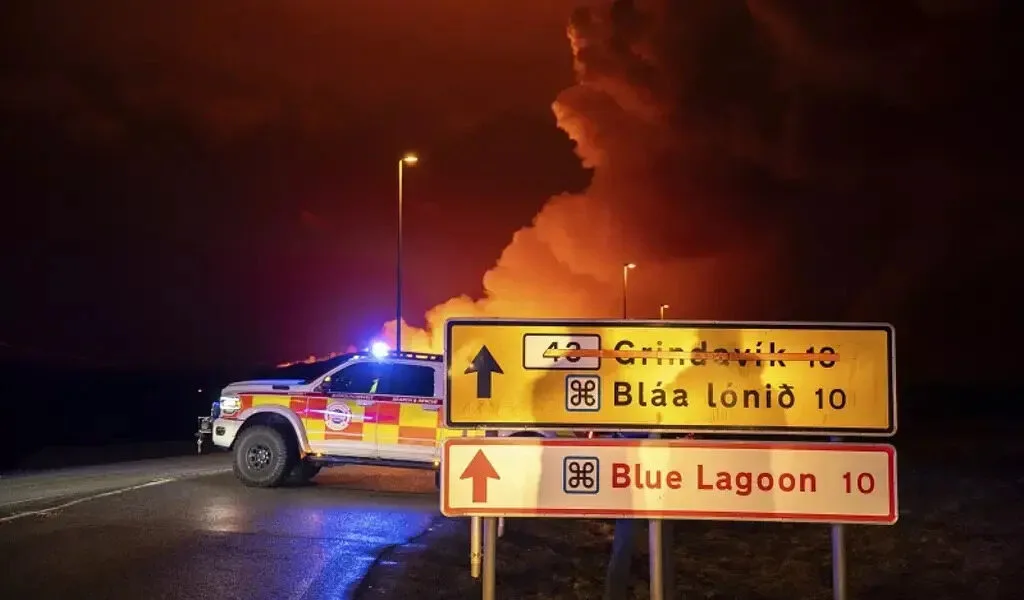(CTN News) – Lava from Iceland’s volcanic eruption has reached defence ramparts, which prevent lava from spreading towards a lagoon and a power plant.
In Iceland, lava from a volcanic eruption flowed toward defences around Grindavik on Sunday.
The fortification has so far prevented the spread of molten rock as the local community has been evacuated. Scientists have reported that the eruption appears to be weakening and will subside within hours. For the fourth time in three months, a volcanic system on the Reykjanes Peninsula in Iceland erupted late Saturday night, sending orange jets of lava into the night sky.
According to Iceland’s Meteorological Office, the eruption opened a fissure in the ground that extends about three kilometers between the mountains of Stóra-Skógfell and Hagafell. Lava was flowing south and southeast at about one kilometer per hour, according to the country’s Met Office. As a result, they warned that it could reach the ocean.
A series of defensive barriers were constructed along the southern coast of the peninsula in order to prevent it from flooding the main road.
National broadcaster RUV reported that hundreds of people were evacuated from Iceland’s Blue Lagoon thermal spa when the eruption began.
In Iceland’s main airport, Keflavik, no flight disruptions were reported. It is located about 50 kilometers southwest of Iceland’s capital, Reykjavik, a coastal town of 3,800 people. Before the initial eruption on 18 December, the town had been evacuated.
The town was hit by a second eruption beginning on 14 January. The lava flow was halted by defensive walls that had been reinforced after the first eruption, but several buildings were destroyed.
Neither eruption lasted more than a few days.
There was a third eruption on 8 February. A river of lava engulfed a pipeline, cutting off heat and hot water to thousands within hours. As a result of its location over a volcanic hot spot in the North Atlantic, Iceland experiences regular eruptions and has a high degree of expertise in dealing with them.
Eyjafjallajokull’s eruption in 2010 resulted in huge clouds of ash entering the atmosphere, leading to widespread airspace closures over Europe.
A resurgence of the Svartsengi volcanic system has been signaled by the latest eruptions after almost 800 years of dormancy. Reykjanes Peninsula, one of Iceland’s most densely populated regions, is not clear when the period of activity will end.
Although no confirmed deaths have been reported as a result of any of the recent eruptions, a worker has been reported missing after falling into a fissure formed by the eruption.
SEE ALSO:
Senate Drags Its Heels On TikTok Bill, White House Urges ‘Swift Action’






